Description
A Must Have for all Palm Tree Lovers
The Kentia Palm, known for its elegant and exotic appeal, is a popular choice among indoor plant enthusiasts. Native to Lord Howe Island in Australia, it’s valued for its striking appearance and adaptability to indoor environments. The Kentia Palm (Howea forsteriana) is a majestic and graceful plant, cherished for its lush, arching fronds and easy adaptability to indoor conditions. It’s a slow-growing palm that can reach impressive heights under the right care, making it a popular choice for adding a tropical flair to homes and offices. The Kentia Palm is not only visually stunning but also known for its air-purifying abilities, making it both a decorative and functional addition to any room.
Caring for your Kentia Palm
Caring for a Kentia Palm can be a rewarding experience. With its elegant fronds and air-purifying qualities, it adds both beauty and health benefits to your home. By following these care guidelines, you’ll ensure your Kentia Palm remains a stunning and healthy addition to your indoor plant collection.
Light
Kentia Palms thrive in bright, indirect light but are remarkably tolerant of low-light conditions. The ideal spot is near a window where the palm can receive filtered sunlight. Direct sun, especially during the harsh midday hours, should be avoided as it can scorch the leaves. If your space lacks natural light, consider using grow lights to provide the necessary illumination. Regularly rotating your Kentia Palm will ensure even growth and prevent it from leaning towards the light source.
Water
Water is a crucial aspect of Kentia Palm care. The soil should be kept evenly moist, but not waterlogged. Overwatering can lead to root rot, a common issue with palms. Allow the top inch of soil to dry out before watering again. This might mean watering once a week, but frequency can vary depending on the temperature, humidity, and light conditions in your home. In winter, reduce watering as the plant’s growth slows down. Always use lukewarm water and ensure your pot has good drainage.
The Kentia Palm prefers a humid environment, typical of its native tropical habitat. If your home is dry, especially during winter, consider using a humidifier or placing the plant on a pebble tray with water to increase humidity. Regular misting can also help but avoid overdoing it to prevent leaf problems.
Soil
A well-draining soil mix is essential for the health of your Kentia Palm. A blend of potting soil, peat, and perlite or sand works well to ensure adequate drainage and aeration. Repotting should be done every two to three years or when the plant becomes root-bound. Choose a container that’s slightly larger than the current one and has drainage holes to prevent water from accumulating at the bottom. Spring is the best time to repot, as the plant will be entering its active growth phase.
Fertilizing
Fertilize your Kentia Palm during the growing season (spring and summer) with a balanced, water-soluble fertilizer, diluted to half the recommended strength. Apply it once a month to provide the necessary nutrients for healthy growth. Avoid over-fertilizing, as this can lead to salt buildup in the soil, which can damage the roots. During the fall and winter, reduce or stop fertilizing as the plant’s growth slows down.
Pruning
Pruning is not typically necessary for Kentia Palms, but you may occasionally need to remove dead or yellowing leaves to maintain its appearance. Use clean, sharp scissors or pruning shears to make clean cuts, and avoid cutting healthy parts of the plant. Wiping the leaves with a damp cloth not only keeps them dust-free but also allows for better photosynthesis and offers an opportunity to check for pests. Common pests include spider mites and mealybugs, which can be treated with insecticidal soap or neem oil.
Common Problems and Issues
Brown leaf tips on a Kentia Palm can indicate low humidity or inconsistent watering. Ensure the plant is receiving adequate humidity and maintain a consistent watering schedule. Yellow leaves can be a sign of overwatering or poor drainage. Adjust your watering routine and ensure the pot has sufficient drainage. If the plant is not growing or the leaves are pale, it might need more light or nutrients. Move it to a brighter location and consider adjusting your fertilizing regimen.

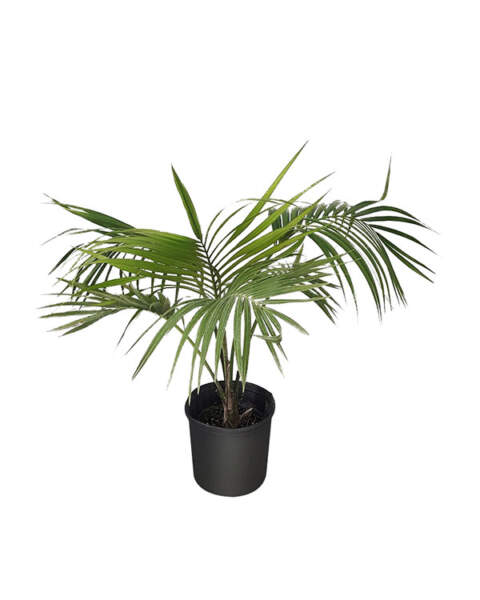
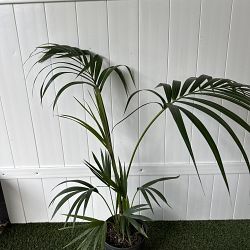
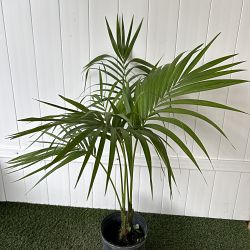
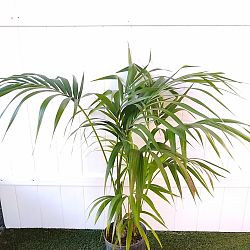
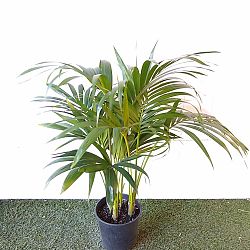
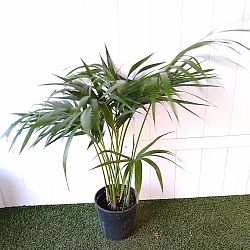
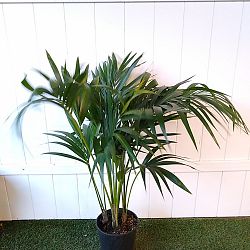
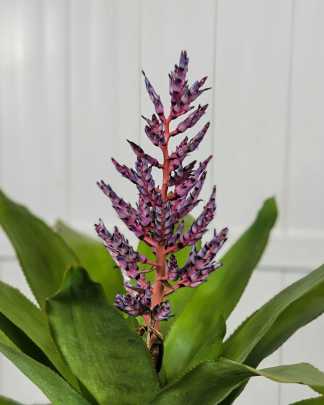
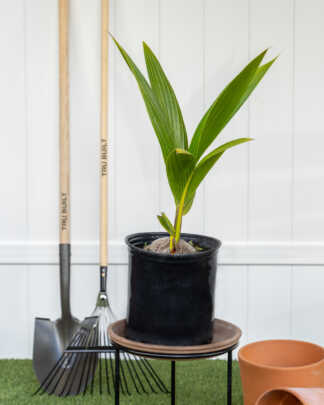
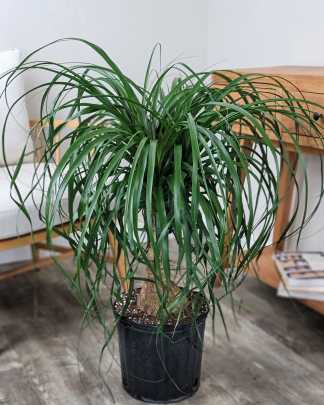
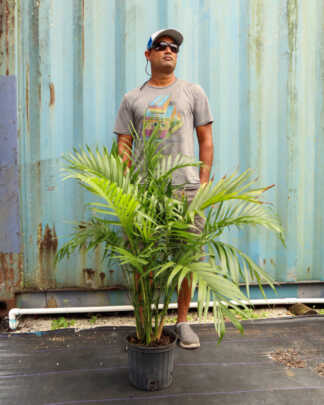
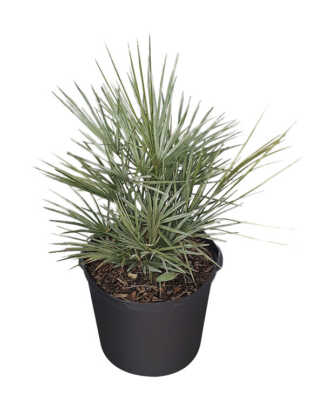


michael mislan (verified owner) –
heathly palm wish it was bigger
Kim B. (verified owner) –
I could not be happier with this purchase. My Kentia Palm arrived in perfect condition. Truly beautiful. I’ll be ordering again.